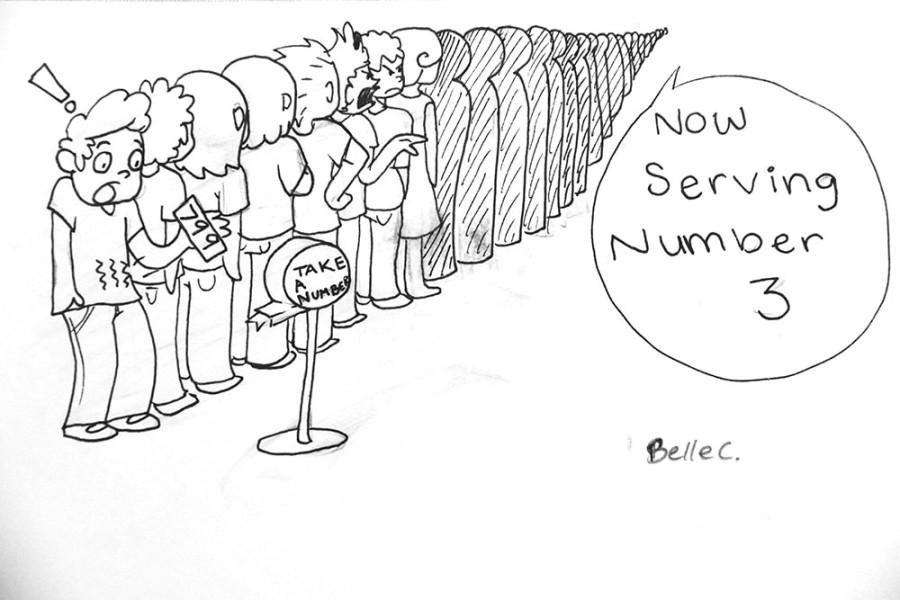FOOD FRENZY
Long lines, food shortages and a crowded cafeteria makes lunch a frustrating 30 minutes
September 18, 2014
Overcrowded tables, long lines, not enough time to eat and overall, not enough food. There’s a long list of problems when it comes to lunch.
The school’s maximum capacity is 2400…with 2355 students that means there are almost 800 students per lunch. The cafeteria is so crowded students are eating outside in the heat, sitting anywhere they can find, including on the hard concrete ground. This will become an even bigger problem once the weather turns cold and students won’t be able to endure dropping temperatures.
Overcrowding leads to the next problem. Infinitely long lunch lines. No matter which lunch you have the lines are miles long—aside from the salad line. By the time students make it through the long lines, pay for their meal and sit down, they have to scarf down their food before the bell rings.
Adding to this problem is teachers have started telling students they need to throw away their food and leave when it’s quite clear they just sat down and have yet to even touch their food. At school, it’s taught you need food as fuel to jump start the learning process, however it’s not really being applied when students are being told to throw away a full plate of “learning fuel.”
It’s only the third week of school so the cafeteria ladies need a chance to adjust to the influx of students. The problem still stands, though. There isn’t enough food to support such a huge student body and often by the time C lunch arrives to eat, there’s not a lot of options for the students coming in. If they run out of pizza or sandwiches during B lunch, students in C are out of luck. That isn’t right or fair to students whom don’t get to choose which lunch they get.
Here are some potential solutions to these problems. First off, overcrowding. During lunch the majority of the school is closed off to all students, particularly the auditorium hallway and Raider Way. But a little supervision to keep things clean and orderly would give students another place to sit, alleviating overcrowding. This would also greatly help in the winter months when the outside areas won’t be usable.
Secondly, the long lines. Why can’t one of the snack lines be turned into a line that serves food from all of the typically busy lines? It would lessen the masses in that one tiny area and spread it out some.
Next, no time to eat. There is 11 minutes between A and B lunch and 15 minutes between B and C. But it doesn’t take 11-15 minutes to clear the cafeteria or clean up the lunchroom. A Rumbler survey of lunch last week showed it took the cafeteria ladies six to seven minutes to clean up. Shortening the break to 7 or 8 minutes would give each lunch a few more minutes and not impact clean up time.
Last but not least, food. Keeping an eye on how fast the most popular of the foods are clearing out and adjusting accordingly will help everyone gets a fair choice in the food they want.
Overall, these are some issues with lunches. But if we consider these options and discuss potential solutions, that big number, 2355, won’t be such a big deal anymore.



